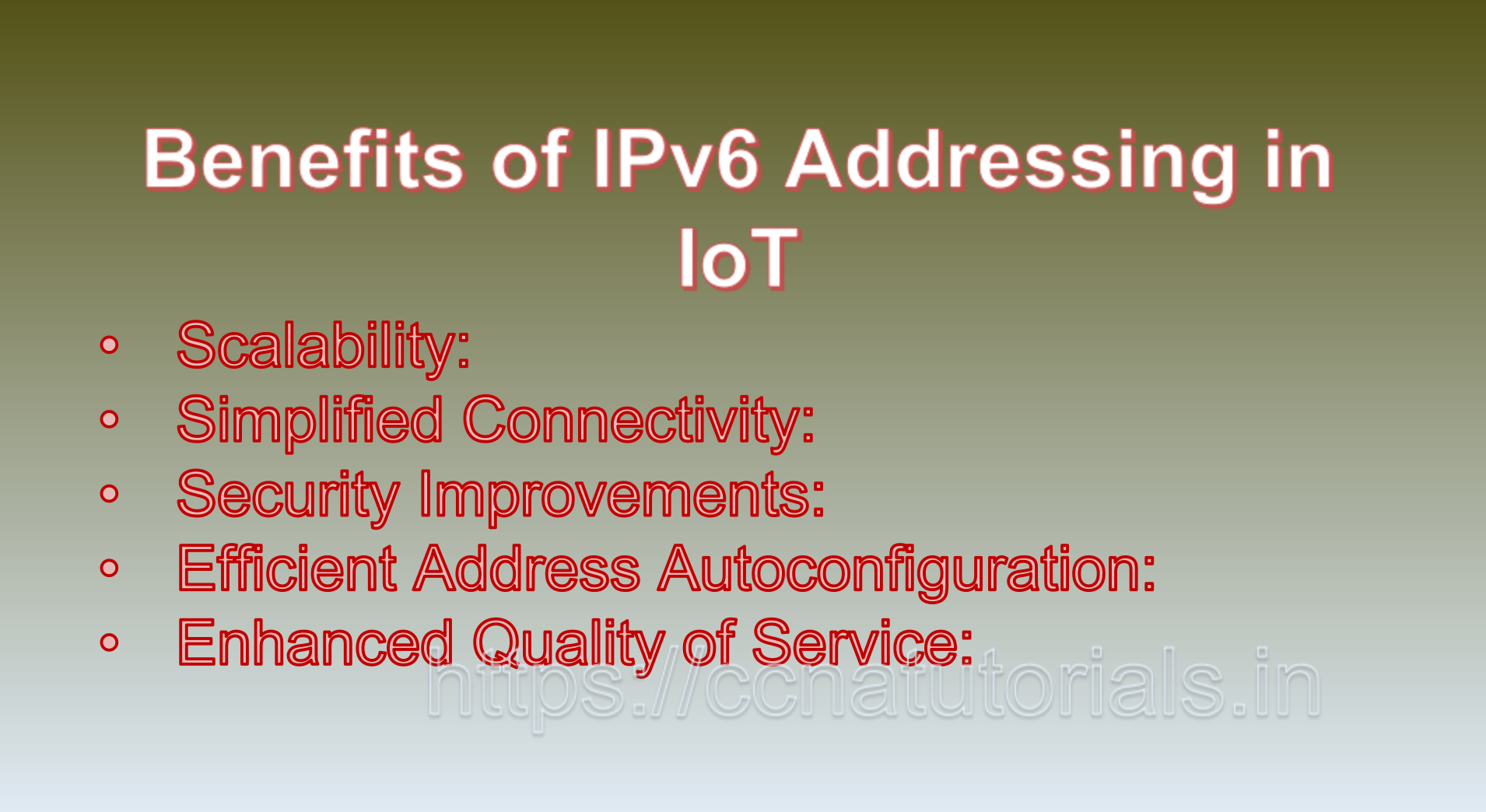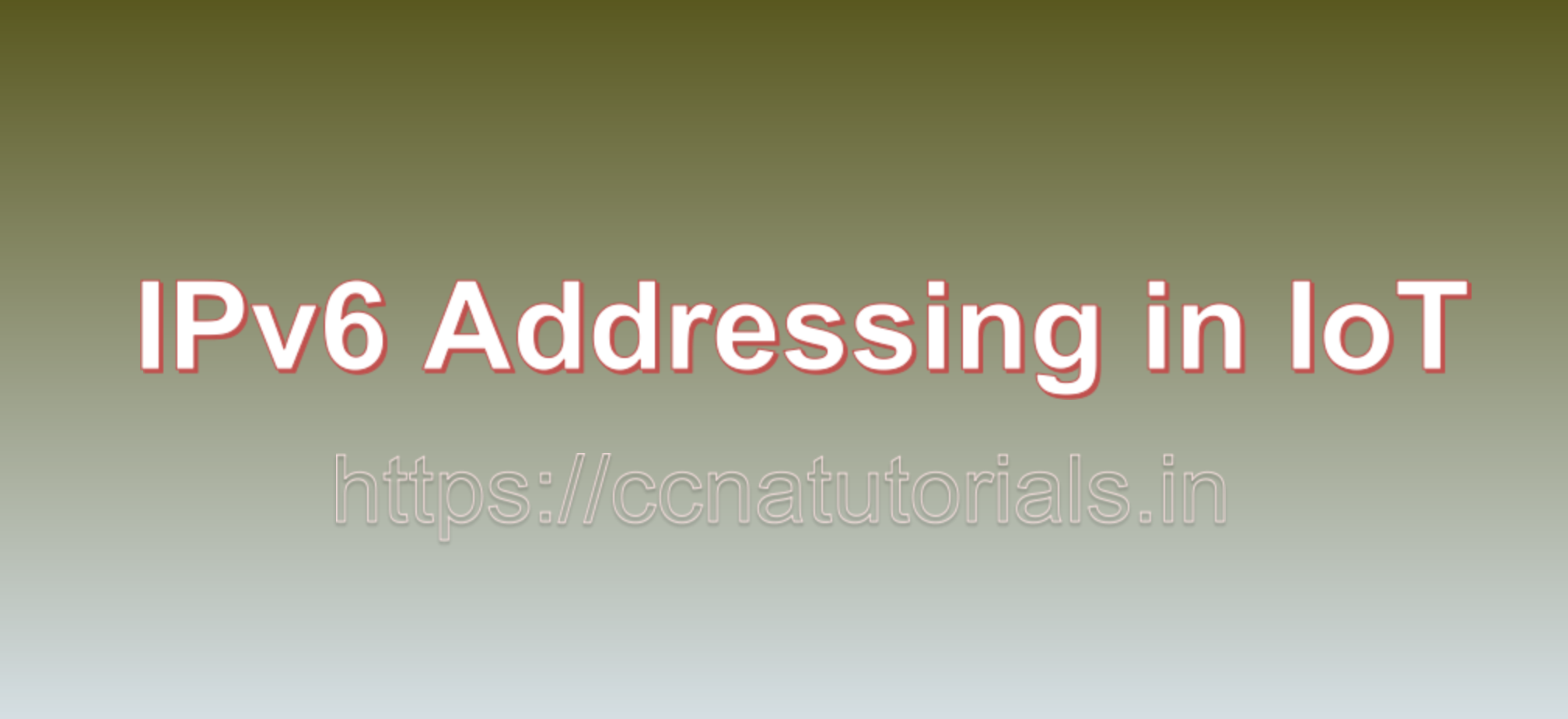Contents of this article
In this article, I describe IPv6 Addressing in IoT (Internet of Things): Enabling Scalability and Connectivity in the Connected World. The Internet of Things (IoT) is revolutionizing the way we interact with the world around us by enabling devices to communicate and share data seamlessly. A critical component of IoT is IPv6 addressing, which provides a foundation for the massive number of devices to connect and communicate effectively. This article offers a concise overview of IPv6 addressing in IoT, explaining its significance, implementation, benefits, and providing examples to illustrate its role in creating a connected and scalable IoT ecosystem.
Understanding IPv6 Addressing in IoT and Its Addressing Challenges
IoT refers to the network of interconnected physical devices, sensors, vehicles, appliances, and more, all embedded with technology to collect and exchange data. This technology revolution has transformed various industries, including healthcare, agriculture, manufacturing, and smart cities. As IoT devices proliferate, they require unique IP addresses to communicate over the internet. However, the limitations of IPv4 addressing, such as address exhaustion and the need for Network Address Translation (NAT), hindered the scalability and growth of IoT.
IPv6 addressing offers a solution to these challenges. With its vast address space, IPv6 can accommodate an astronomical number of devices, ensuring that each device can have a unique and globally routable address. This eliminates the need for NAT and facilitates direct communication between devices, leading to more efficient data exchange and improved connectivity.
Implementation of IPv6 Addressing in IoT
Implementing IPv6 addressing in IoT involves assigning IPv6 addresses to individual devices, enabling them to communicate seamlessly within the IoT ecosystem. Here’s a simplified breakdown of the implementation process:
1. Unique IPv6 Addresses:
Each IoT device is assigned a unique IPv6 address. This address is composed of a network prefix and an interface identifier, which can be based on the device’s MAC address or other methods.
2. Autoconfiguration:
IoT devices can use IPv6 Stateless Address Autoconfiguration (SLAAC) to generate their interface identifier and create a complete IPv6 address. This process eliminates the need for manual address configuration.
3. Address Management:
Organizations and network administrators manage the allocation of IPv6 addresses to IoT devices. This can be done dynamically using DHCPv6 (Dynamic Host Configuration Protocol for IPv6) or through other management tools.
4. Routing and Communication:
IoT devices use their IPv6 addresses to route and exchange data over the internet. With globally routable addresses, devices can communicate directly without the complexities of NAT.
Benefits of IPv6 Addressing in IoT
IPv6 addressing offers a range of benefits that are particularly advantageous in the context of IoT:
1. Scalability:
IPv6’s vast address space ensures that the increasing number of IoT devices can be accommodated without running out of unique addresses.
2. Simplified Connectivity:
IoT devices can communicate directly with one another without the need for NAT, streamlining data exchange and reducing latency.
3. Security Improvements:
IPv6 includes built-in security features such as IPsec, which enhances the confidentiality and integrity of data transmitted between devices.
4. Efficient Address Autoconfiguration:
SLAAC enables devices to generate their addresses automatically, reducing the need for manual configuration and easing deployment.
5. Enhanced Quality of Service:
IoT devices can communicate more efficiently, leading to improved performance and reliability in applications like real-time monitoring and control.
Examples Illustrating IPv6 Addressing in IoT
1. Smart Agriculture:
In precision agriculture, IoT devices such as soil moisture sensors, weather stations, and drones gather data to optimize crop yields. Each sensor is assigned a unique IPv6 address, enabling them to send data to centralized systems for analysis and decision-making.
2. Healthcare Monitoring:
Medical IoT devices like wearable health trackers and remote patient monitoring systems generate health data that needs to be transmitted securely. IPv6 addressing ensures direct communication between these devices and healthcare providers’ servers, improving data integrity.
3. Smart Cities:
IoT-enabled streetlights, traffic sensors, and waste management systems can communicate seamlessly using IPv6 addresses. This facilitates real-time data collection and management for city services optimization.
4. Industrial IoT (IIoT):
In manufacturing environments, IoT devices like sensors and robots communicate with each other and control systems. IPv6 addressing allows for efficient communication between these devices, leading to improved automation and production processes.
5. Home Automation:
IoT devices in smart homes, such as thermostats, door locks, and security cameras, connect to a home network using IPv6 addresses. This enables users to control and monitor these devices remotely.

In short IPv6 Addressing in IoT
IPv6 addressing is a foundational element in the Internet of Things, addressing the limitations of IPv4 and enabling the growth and scalability of the connected world. With its vast address space, efficient autoconfiguration, and enhanced security features, IPv6 empowers IoT devices to communicate seamlessly, improving data exchange, connectivity, and overall functionality. As IoT continues to shape various industries, understanding and implementing IPv6 addressing becomes essential in building a robust, interconnected, and efficient IoT ecosystem.
IPv6 Addressing in IoT (Internet of Things): Enabling Scalability and Connectivity for a Connected World
The Internet of Things (IoT) is transforming the way we interact with our environment by connecting everyday objects and devices to the internet. One of the foundational elements enabling the growth of IoT is IPv6 addressing. In this article, we’ll explore how IPv6 addressing plays a critical role in facilitating the scalability, connectivity, and management of IoT devices. We’ll delve into the basics of IPv6 addressing in the context of IoT, provide examples to illustrate its significance, and highlight the challenges and considerations associated with addressing in the IoT landscape.
Understanding IPv6 Addressing in IoT: An Overview
IPv6, the sixth iteration of the Internet Protocol, was designed with the future in mind, addressing the limitations of IPv4 and accommodating the explosion of devices expected in the IoT era. IPv6 introduces a significantly larger address space, with 128-bit addresses compared to IPv4’s 32-bit addresses. This vast address space allows for a virtually unlimited number of unique addresses, which is essential for accommodating the sheer volume of devices that IoT envisions.
In the context of IoT, IPv6 addressing serves as a fundamental mechanism for identifying and communicating with devices over the internet. Each IoT device is assigned a unique IPv6 address, enabling it to send and receive data packets within the global network.
IPv6 Addressing Structure and Format
An IPv6 address consists of eight groups of four hexadecimal digits, separated by colons. For example: 2001:0db8:85a3:0000:0000:8a2e:0370:7334. However, IPv6 addresses can be simplified using certain rules:
– Leading zeroes within a group can be omitted.
– A series of consecutive zero groups can be replaced by a double colon (::), but this can only be used once in an address.
For example, the address 2001:0db8:0000:0000:0000:0000:0000:7334 can be simplified to 2001:db8::7334.
Significance of IPv6 Addressing in IoT
1. Scalability:
IPv6’s vast address space ensures that the growing number of IoT devices can be uniquely identified and connected without running out of addresses. This scalability is essential as billions of IoT devices are expected to be deployed in various sectors.
2. End-to-End Connectivity:
Each IoT device can have a globally unique IPv6 address, facilitating direct communication with other devices or servers across the internet without requiring intermediate network address translation (NAT).
3. Autoconfiguration:
IPv6 enables devices to automatically configure their addresses using Stateless Address Autoconfiguration (SLAAC). This feature is particularly useful for IoT devices that may be deployed in remote or resource-constrained environments.
4. Network Segmentation:
IPv6’s address space allows for efficient network segmentation and hierarchical addressing, which can help manage and organize IoT devices into different subnets based on location, functionality, or security requirements.
5. Mobility Support:
IPv6 supports seamless mobility for IoT devices, enabling them to move between networks without changing their IP addresses. This is crucial for scenarios involving mobile IoT devices or assets.
Examples to Illustrate IPv6 Addressing in IoT
1. Smart Home Devices:
Consider a smart home ecosystem with IoT devices such as smart thermostats, lights, and security cameras. Each device is assigned a unique IPv6 address, enabling homeowners to control and monitor them remotely. For instance, a homeowner can adjust the thermostat’s settings by accessing its IPv6 address through a mobile app.
2. Industrial IoT (IIoT) Networks:
In an industrial setting, IoT devices could include sensors and actuators used for monitoring machinery, temperature, or production processes. These devices are assigned distinct IPv6 addresses, allowing operators to gather real-time data and perform diagnostics from a central location.
3. Agricultural Monitoring:
In precision agriculture, IoT devices like soil moisture sensors and drones equipped with sensors are used to monitor and optimize crop health. Each IoT device has its IPv6 address, enabling farmers to access critical data about their fields remotely.
4. Smart Cities Infrastructure:
In a smart city deployment, IoT devices can include smart streetlights, waste management systems, and traffic sensors. Each device has a unique IPv6 address, enabling city officials to manage and optimize urban infrastructure more effectively.
Challenges and Considerations
While IPv6 addressing offers numerous benefits for IoT, there are challenges to be addressed:
1. Address Management:
With a vast number of IoT devices, managing and tracking IPv6 addresses becomes a challenge. Proper address assignment and management tools are necessary.
2. Security:
Having a unique IP address for each device can improve security visibility, but it also exposes devices to potential attacks. Robust security measures are required to safeguard IoT networks.
3. Network Configuration:
The complexity of assigning unique addresses to numerous devices requires efficient network configuration strategies, especially in large-scale IoT deployments.
4. Interoperability:
IoT devices come from various manufacturers and may have different networking capabilities. Ensuring interoperability between devices with varying IPv6 capabilities can be challenging.
Conclusion for IPv6 Addressing in IoT
IPv6 addressing is a foundational element that supports the growth of IoT by enabling scalability, end-to-end connectivity, and efficient management of devices. As IoT continues to expand across various industries, the unique addressing capabilities of IPv6 will play a pivotal role in ensuring seamless communication, control, and monitoring of devices in the connected world. While challenges exist, the benefits of IPv6 addressing in IoT make it a crucial component of building a sustainable and interconnected IoT ecosystem. You may comment below or contact us for any query related to this article.






